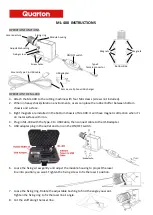
Application Guide - NP900 Series
438 (504
)
A996A
In the register of the SOTF function is recorded activated “On” event process data. In the
table below is presented the structure of SOTF function register content. This information
is available in 12 last recorded events for all provided instances separately.
Table 3.6.6.4-258. Register content.
Date & Time
Event
code
SG in
use
SOTF
remaining
time
SOTF
been
active time
3.6.7
V
OLTAGE REGULATOR
(90)
Automatic voltage regulator (AVR) is used for secondary voltage control in transformers
which have on-load tap changer (LTC). Voltage regulator raises or lowers the secondary
voltage based into measurements of the bus voltage values. Actual controlling takes place
in LTC which either increases or decreases the secondary winding thus causes increase
or decrease of the transformer output voltage.
Transformer secondary voltage / bus voltage may vary based into the load change, load
power factor change, transmission system variations, R and X of the load changes and
LTC changes. From these mentioned quantities the LTC change. Aim of using automatic
voltage regulator is to maintain stable secondary voltage so that distribution voltage does
not rise dangerously high or fall unusably low.
For the acceptable voltage range utilities have to follow regional or governmental
regulations. Voltage quality measurement is done with 10 minute average, within this
measurement 95% of the measured voltages must be ±10% of nominal voltage and all
measured voltages must be +10% … -15% of the nominal voltage. This voltage is
normally gotten from 20/0.4 kV distribution transformers on the medium voltage overhead
line (rural areas) and cable networks (urban areas) so the 20 kV medium voltage is the
place where the voltage has to be controlled for all distribution transformers behind the
feeding transformer by controlling the LTC. This control model is commonly called “Bus
regulation”.
Other uses for voltage control are for example reactive power control and optimization in
the transmission lines.
















































